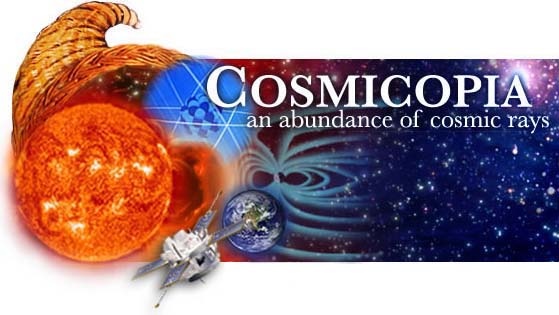
Ask Us
Planets and Moons
General Information on the Planets
What are some good Web sites for information on the planets in our solar system?For info on the planets please see either NASA JPL's Welcome to the Planets or the University of Arizona's The Nine Planets Web sites.
There's an online orrery at Fourmilab. An orrery is something that shows the positions of the planets. Mechanical orreries existed before there were computers (and still exist), but now most are done in software.
Drs. Louis Barbier and Eric Christian, and Ms. Beth Barbier
(March 2000)How Many Planets in our Solar System?
Does our solar system now consist of 8 or 9 planets since Pluto has been downgraded to a dwarf planet? As a teacher, I want to give the students current information.This is beyond our area of expertise, but we can refer you to some other websites:
This one addresses the issue from an educational viewpoint:
I hope this helps.
Beth Barbier
(May 2007)How Long to Travel to the Edge of Our Solar System
How long would it take to get to the edge of our Solar System?The New Horizons spacecraft, currently on its way to Pluto, will take about nine years to get there. But you can read more about this distance on the Cosmic Distance Scale site, where you will see that the Solar System goes well beyond the planets.
Beth Barbier and Eric Christian
(January 2010)Scale of the Solar System
I want to show my students the size and spacing of the planets, using a scale model with balls, fruit, etc. Can you help me?This isn't in our area of expertise, but I was able to find a website with a list of solar system scale models.
The first one on the list looks very good: How Big is the Solar System?
Beth Barbier
(August 2005)Locating Planets
I just got a telescope and want to try to find some of the planets. Where can I find a guide to locating the closest planets?A magazine such as Sky & Telescope will give you monthly sky maps that will include the locations of the planets. Or you can check Sky & Telescope online or any of several planetarium programs on the web, such as the Fourmilab site.
Dr. Eric Christian
Why Do the Planets Move?
What makes the planets move the way they do? Despite the knowledge of the expansion of the universe...Planets move because the gas cloud that originally formed the solar system was spinning. The gas that wasn't spinning fell into the proto-Sun, and the planets formed from gas and chunks that were spinning enough that they were in orbit. Once the planets formed and were in orbit about the Sun, there was no reason for them not to stay there (objects in motion tend to remain in motion). The expansion of the universe is essentially negligible on the scale of the solar system, that is, it appears to have only a very, very small affect on the solar system.
Dr. Eric Christian
Why Are Planets in a Disk Around a Star?
Why is it that planets tend to travel on the same planes with respect to their stars? I know the birthing process of a star begins in a cloud-like nebula, so why don't planets cluster from the cosmic dust in multiple planes with respect to their stars? Why is the gravitational pull perpendicular to that specific plane and not equally applying itself to all planes to produce solar systems that are globe-like rather than disk-like?The reason planets mostly form in the same plane is that the first step in the transformation from a gas cloud to a solar system is that the cloud collapses down to a disk. This happens because of conservation of angular momentum (the cloud originally has some spin), and random collisions tend to damp out the random velocities that fill up the spherical cloud. It's only after the disk forms that the densities get high enough and the collisions get frequent enough that planets can form.
Dr. Eric Christian
(February 2011)What Keeps the Planets in Orbit?
What keeps the planets in orbit? Is it gravity? If it is, why don't the planets "fall down" like things do here on Earth? Does the Sun have its own gravitational pull that keeps the planets in place? If so, why don't the planets all run into the Sun?Gravity from the Sun is what keeps the planets in orbit around the Sun, just as gravity from the Earth is what keeps the Moon and satellites and the space shuttle in orbit around the Earth. The reason the Moon doesn't hit the Earth (and the Earth and other planets don't hit the Sun) is that the Moon is moving fast enough to miss the Earth.
If you were to stand on Mt. Everest and throw a rock (and forget completely about air resistance), it would travel a certain distance before hitting the Earth. As you throw the rock faster, it travels farther. Eventually, if you throw the rock fast enough, it travels all the way around the Earth and hits you in the back. It is still falling towards the Earth, but the surface of the Earth (because the Earth is round) is falling away just as fast. The rock is now in orbit. Continue throwing it faster and faster and the orbit gets bigger (farther from the Earth) on the far side of the Earth, but still comes around to hit you in the back. Eventually you throw the rock at what is called the "escape velocity" and it breaks away from the gravity of the Earth and never falls back.
So there are three ranges of sideways velocity:
- Slow enough so that the object falls down and hits
- Fast enough so that the object is in orbit, but not too fast
- Really fast so that the object escapes
All of the planets (and the Moon around the Earth) are in category 2. If this seems strange, it's not. When the Solar System was forming, everything that was in category 1 actually fell into the Sun, and everything that was in category 3 escaped from the Solar System, leaving only the stuff (planets, asteroids, comets, etc.) in category 2.
Dr. Eric Christian
(January 2002)Why Don't All the Planets Spin the Same Direction?
Basic principles of physics state that when an explosion occurs, all particles coming from it will all be spinning in the same direction, right? So if the Universe occured by explosion (i.e. Big Bang), all of the planets and such should be spinning in the same direction. Why isn't this the case?There is no physical law that states that when an explosion occurs all particles will be spinning in the same direction. Angular momentum (the physical measure of spinning) will be conserved, so if the original object was spinning (had angular momentum), the sum of the angular momentums of all the "shrapnel" will equal the original angular momentum, so more will be spinning in the original direction. But individual "shrapnel" can be spinning in the opposite direction.
In the case of Venus and Uranus, the most reasonable theory is that a massive collision while they were forming caused them to spin opposite (in the case of Venus) or at right angles (in the case of Uranus) to the other planets and the Sun.
Dr. Eric Christian
(March 2000)Retrograde Rotation
I was looking at a NASA Planetary Fact Sheet. Why are the rotation periods of some of the planets (like Venus) a negative number?If you go to the website and click on the words "Rotation Period" in the left column, you can get the answer:
Rotation Period (hours) - This is the time it takes for the planet to complete one rotation relative to the fixed background stars (not relative to the Sun) in hours. Negative numbers indicate retrograde (backwards relative to the Earth) rotation.
If you are asking why there is retrograde motion, we have already answered that question on our site. See Why Don't All the Planets Spin the Same Direction?
Dr. Eric Christian
(December 2003)Shape of Planetary Orbits
What is the shape of the path traveled by the planets around the Sun? I know it's elliptical, but is it exact? I would tend to believe it is more of an egg-shaped path than a perfect ellipse. What are the dimensions of Mars' path around the Sun?The orbits of the planets are ellipses, as discovered by Kepler. An ellipse is defined by its major axis (D) and the distance between the two foci (F). The eccentricity (e) is the ratio of F to D, or: e = F/D. For Mars, D = 4.556 x 108 km, and e = 0.09.
For more information on the planets and their orbits, check out An Overview of the Solar System
Dr. Louis Barbier
Visualizing Planetary Orbits
I am trying to find or create a program that will display the orbits of planetary objects, using their proper ellipses. Assuming I have the perihelion, apehelion, and other relevant details, how would you recommend that I apply Kepler's law to return coordinates for the orbit relative to time?Here are some references that should help:
- QB51.3 .E43 M42 1998
Astronomical algorithms / Jean Meeus.
Meeus, Jean. - QB43.2 .M44 1997
Mathematical astronomy morsels / Jean Meeus.
Meeus, Jean. - Astronomical Algorithms
Basic Source Toolbox
Version 2.00
Jeffrey Sax
Dr. Louis Barbier
(July 2001)- QB51.3 .E43 M42 1998
Kepler's Laws of Planetary Motion
What relationship do Kepler's laws have with Newton's law of gravitation? Do they have anything in common? Can Kepler's 3 planetary laws be applied to the satellites that orbit Earth? Can Kepler's planetary laws can be applied to find the orbital period of any planet, not just Earth?Kepler's Laws are:
- Planets move along ellipses, with the Sun at one focus.
- The line from the Sun to the planet covers equal areas in equal times.
- The square of the orbital period is proportional to the cube of the mean distance from the Sun.
Answering all your questions at once, Kepler's planetary laws can be derived from Newton's law of gravitation. Kepler organized the observations, but Newton came up with the underlying law. Kepler's laws can be applied to any so-called "two-body" system, where a smaller object revolves around a larger one. The constants are different, but the laws work.
More about Kepler's laws at From Stargazers to Starships and at the Kepler mission site.
Dr. Eric Christian and Beth Barbier
Where Does the Energy Come From?
As Europa orbits Jupiter, it is deformed by enormous gravitational forces. This kneading of Europa's thick, icy surface would create sufficient friction to heat the core and possibly melt some of the ice. If energy is created, where does it come from? Does this affect the orbit?The energy comes from the orbital and rotational energy of the system. The first thing that will usually happen is that the rotation of the moon will slow down until it is locked, with one face always pointed towards the planet. The Earth's Moon and many other moons in the solar system have already reached this point. The next thing that happens is that the orbit of the moon gets larger and the planet's spinning slows down. Both have to happen at the same time in order to conserve angular momentum while draining energy from the system. Because of ocean tides on the Earth, the Moon is getting farther away and the Earth's day is getting longer. It is the same process.
Dr. Eric Christian
(January 2002)Planetary Speed
Are orbital speeds of the planets all the same? I know the farther a planet is from the Sun, the longer its year, but does that mean the speed is the same, just with a longer distance?No, the orbital speed of planets decreases the longer the distance. For circular orbits the "year" increases like the radius to the 3/2 power, and the velocity decreases proportional to the square root of the radius of the orbit.
Dr. Eric Christian
(December 2000)Mining Planets
How would you mine and separate minerals from other planets in zero or near zero gravity?You'd do it pretty much the way you do it on Earth, except you'd use enclosed hoppers, smelters, etc., and you would have to design your ore transport system a bit different. Just letting the ore fall onto conveyor belts won't work. I'll point out, however, that other planets and even moons will have plenty of gravity for you to work with. Mining meteoroids and asteroids might be done in near zero gravity, however.
Dr. Eric Christian
Water on Venus?
Is there really water on Venus?Venus is too hot for liquid water, but about 0.1% of the atmosphere is made up of water vapor. I got this information from "Welcome to the Planets" Venus page.
Dr. Eric Christian
Composition of Mars
What is the composition of the planet Mars?The composition of Mars is similar to that of the Earth, with maybe a bit more iron and sulfur. For more information on Mars, I suggest you check the Nine Planets website.
Dr. Eric Christian
Similarity of Mars and Earth
I read in an astronomy book that the atmosphere of Mars is mostly composed of carbon dioxide. So how does Mars have a similar composition to that of the Earth?First, the overall composition (atmosphere, rock, everything) of the Earth and Mars are similar because they formed in a similar region of the proto-solar nebula. Second, the primitive atmosphere of the Earth was much higher in carbon dioxide, so there were probably times (billions of years ago) where the atmospheric composition of Mars and the Earth were similar. There is no evidence that atmosphere of Mars had at any point a composition that is similar to the present day Earth's, as far as I know.
Dr. Eric Christian
(May 2001)Why is Mars Red?
Why is Mars red?Mars is red because there is a lot of iron oxide, also known as rust, in the rocks and sand that make up the surface.
Dr. Eric Christian
Jupiter in the Night Sky -- Finding the Planets
Would please identify the star or planet seen west of the Moon on the night of 1-21-99 at 6:30 pm. We live in Grants Pass, Oregon and are really curious, for it is so clear and beautiful.It was almost certainly Jupiter. There are many good magazines like Sky & Telescope that you can get from your local library or newstand that describe what's visible in a given month. A telescope is not needed; a lot can be done with a reasonable pair of binoculars.
Dr. Eric Christian
Gravity on Jupiter
What is the acceleration due to gravity on Jupiter?Jupiter has about 2.6 times Earth's gravity. So, in feet per second per second, the acceleration on Jupiter its 32 * 2.64 = 84.5 feet/sec/sec.
Dr. Louis Barbier
Jupiter's Red Spot
How did Jupiter's red spot form?Your question is beyond our area of study, but you might want to check the following:
- The Great Red Spot at the Online Journey Through Astronomy
- Jupiter at The Nine Planets
Beth Barbier
The Orbit of Europa
As Europa orbits Jupiter, it is deformed by enormous gravitational forces (tides), which causes friction and heats the core of the moon. Energy is apparently created -- where does it come from? Will the orbit be affected over time?The energy comes from the orbital and rotational energy of the system. The first thing that will usually happen is that the rotation of the moon will slow down until it is locked, with one face always pointed towards the planet. The Earth's Moon and many other moons in the solar system have already reached this point. The next thing that happens is that the orbit of the moon gets larger and the planet's spinning slows down. Both have to happen at the same time in order to conserve angular momentum while draining energy from the system. Because of ocean tides on the Earth, the Moon is getting farther away and the Earth's day is getting longer. It is the same process.
Dr. Eric Christian
(January 2002)Orbits of Neptune and Pluto
What explains the erratic orbits of Pluto and Neptune and why they will cross paths?Neptune's orbit isn't that erratic: only Venus has an orbit that's more circular than Neptune's. It's Pluto that's the oddball, having an orbit that is more of an ellipse than any other planets. That ellipse has its perihelion (closest approach to the Sun) closer than Neptune's orbit, although its average distance is more. Pluto also has an orbit that makes a larger angle to the plane of the solar system (the ecliptic) than other planets. Although the orbits appear to cross, it is only because a drawing is only a two dimensional image of the orbits. In three dimensional space, the orbits look like two loops of string that are interlocked, but don't actually touch.
So, although Pluto is currently closer to the Sun than Neptune, the orbits don't cross in a way that will ever lead to a collision. There are some diagrams to help explain this at The Nine Planets.
Dr. Eric Christian
How Many Sidereal Years is Pluto Closer Than Neptune?
How can I determine how many sidereal years Pluto is closer than Neptune during one period of Pluto's orbit?Using an orrery program (a program that charts the planets) is probably easier than calculating it from orbital elements. Depending upon what accuracy you need, it should be pretty easy to get. It's a little over 20 years (from January 1979 to February 11, 1999). The difference between sidereal years and calendar years is in the fifth decimal place, smaller than the effect of the eccentricy of Neptune's orbit (0.008).
Dr. Eric Christian
A Year on Pluto
How long does it take for Pluto to orbit the Sun?Pluto takes 248 years to orbit the Sun.
Dr. Eric Christian
Why Has Pluto Moved Closer to the Sun?
Why has Pluto moved in toward the Sun over one billion miles since its discovery, but no other planet has moved toward the Sun since 1930?All of the planets move closer and then farther from the Sun every half "year". The Earth moves closer by several million miles between aphelion (furthest position from the Sun) and perihelion (closest position). We've just observed Pluto during the half of its year that it's moving closer.
Dr. Eric Christian
Planet Beyond Pluto?
Is it true that there's another planet beyond Pluto's orbit?There is no evidence that there is any planet in our solar system beyond the orbit of Pluto. You might want to read more about this topic at Phil Plait's Bad Astronomy web site.
Dr. Eric Christian and Ms. Beth Barbier
Shepherd Moons
Didn't the rings of Saturn become a flat disk because of gravitational forces of two bodies pulling at each other, balanced by centrifical forces pu lling them apart. I believe it's called the "shepherding moon theory?"Shepherd moons keep ring edges sharp in the radial direction. They have nothing to do with the fact that rings form in planes. The reason rings, solar systems, and galactic disks form in planes is just a function of the original angular momentum of the system. You can look at the Nine Planets web site for more information on shepherd moons.
Dr. Eric Christian
Planet Alignment?
I heard that on May 5th, 2000 all nine planets in our solar system will be in a straight line for the first time ever. Is this true??I recently heard some curious discussion about all the planets in our solar system becoming aligned in the year 2004. There is speculation on this having an effect on the Earth's magnetic poles and perhaps the Earth actually fipping over on its axis. Can you shed some light on this -- will the planets' alignment create some forces on the Earth that affect weather, gravity, continent movements, etc? How often has this happened in recorded history, and if it has, were there any noted effects? What is the term for this phenomenon?
No, all nine planets are not going to be in a straight line on May 5th, 2000. Planetary alignments of one sort or another happen all the time and have for 5 billion years, and they have NO effect on the Earth, despite what some kooks and con artists say.
The gravitational attraction of anything other than the Sun and the Moon on the Earth is essentially negligible. The energy required to actually flip the spin axis of the Earth is huge, due to something called conservation of angular momentum. The magnetic field of the Earth does flip aperiodically, and actually we are long overdue, but the alignment of the planets will have nothing to do with it. The magnetic field flip probably has its origin in the turbulent magma dynamo that generates the magnetic field.
The term for this alignment phenomenon is "hoax".
Dr. Eric Christian
More on Planetary Alignment
How often do all 9 planets line up in an exact line and when was the last time that happened? Or the next time it will happen? Where can I find scientific information on when the planets will align?If you are talking about an "exact" line, it has probably never happened. Even having all 9 planets in a rough line is very infrequent (millions of years, depending upon how "rough" a line you're willing to take).
For a lot more information, you can check out Phil Plait's Bad Astronomy web site. You might also check out a popular astronomy magazine like Sky and Telescope, which covers visual positions of the planets. If you are interested in alignments in space, you can check an online Orrery like that at Fourmilab.
Dr. Eric Christian
Magnetic Field Interactions Between Planets
Does the magnetic field "tail" of Jupiter cause any disruption to Saturn when the two planets are aligned? I read that the tail of Jupiter's magnetic field extends as far as the orbit of Saturn, so I assume that there is some form of interaction -- what happens?Three of us worked together on this question - Drs. Charles Smith (part of the "Ask Us" team), William Kurth (University of Iowa), and Michael Desch (NASA GSFC).
This is a very good question that has significant implications. Some years back Dr. Smith had to worry about this because he was studying the solar wind in the vicinity of Saturn. He needed to exclude those periods when the Voyager spacecraft (the source of his data) passed through Jupiter's distant tail. Others (Drs. Kurth and Desch) have studied it specifically to understand Saturn's reaction to the Jovian tail.
Before we dive into this too far, let us mention the papers that discuss the properties of these distant tail observations:
- Behannon et al. (Journal of Geophysical Research, volume 86, page 8386, 1981)
- Kurth et al. (Journal of Geophysical Research, volume 86, page 8402, 1981)
- Kurth et al. (Journal of Geophysical Research, volume 87, page 10,373, 1982)
Your library can probably get these articles through interlibrary loan. They aren't necessarily easy to read, since they are the original source documents written by the scientists, but they get to the heart of the matter.
Planetary magnetospheres react to changing solar wind conditions. If the wind conditions are stationary, the magnetosphere adopts a quasi-stable configuration. It reacts periodically, in almost a rhythmic fashion, but is largely stable. When solar wind conditions change, the magnetosphere seeks out a new equilibrium, and this can lead to some dramatic changes.
When the pressure of the solar wind is reduced, the magnetosphere expands. When the pressure increases, the magnetosphere contracts. In the process, portions of the magnetosphere will break off and the entire structure reorganizes itself with dramatic results (the aurora, changing magnetic fields on the Earth's surface, etc.). Expansion may not be quite as dramatic as contraction, but it is often characterized by the absence of familiar activity.
Jupiter's tail represents a region of reduced solar wind pressure, so Saturn's magnetosphere would have expanded under these conditions.
One diagnostics of the expansion was the disappearance of Saturn's kilometric radiation. This is a radio signal produced by the acceleration of electrons in association with the planet's auroral activity. This signal vanished for several days during the times when Saturn was within Jupiter's distant tail. It's probably true that Saturn's magnetosphere expanded a good deal during this time, and this is part of the explanation for the disappearance of the kilometric radiation, but we have no independent measure of the magnetosphere's expansion since there wasn't a spacecraft in the right location at that time to measure the expanded magnetosphere. Along with that expansion comes a general relaxation of the processes that accelerate auroral electrons on Saturn.
A description of when the Saturnian kilometric radiation disappeared is available in Desch (Journal of Geophysical Research, volume 101, page 6904, 1983).
Looking at the reverse effect of hitting Saturn's magnetosphere with a dense, fast-moving solar transient, there is a recent paper by Prange et al. (Nature, volume 432, 78-81, 2004) that demonstrates a strong Saturnian aurora driven by a disturbance that struck Saturn's magnetosphere.
Drs. Charles Smith, William Kurth, and Michael Desch
(December 2004)Extra-Solar Planets
Can you tell me how many planets from other solar systems we have found? Can you tell me some or maybe ALL of their names? Is there really a planet called Pegasus in another solar system that only takes four days to orbit it's Sun?I'm not an expert on extra-solar planets, but I think I can point you in the right direction. There are about 15 good candidates for planets around stars other than the Sun. There is one, 51 Peg b (one of the first ones discovered), that is in the Pegasus constellation and has a "year" of a little more than four days. There's a good page on extra-solar planets at Scientific American.
Dr. Eric Christian and Beth Barbier
More on Extra-Solar Planets
I read that eight new planets have been located orbiting stars outside the solar system, two of them orbiting in the "habitable zone". Do you know who discovered them and who is doing this research?Harvard maintains a good web site devoted to the extrasolar planets. I would suggest you look at: The Extrasolar Planets Encyclopaedia.
Dr. Louis Barbier
(November 2001)Fictional Planet and Binary Suns
As an idea for a story I am writing, I would like to ask you a few questions about binary orbits and their possible effects on an Earth-like planet. The planet I have in mind has no planetary tilt. Perhaps you could tell me what kind of effects a binary sun (yellow) pair might have on such a planet and how it might affect the seasonal playouts, if there would be any seasons at all. I know that our seasons are caused by the Earth's own tilt. But I believe planet-wide seasons (more extreme at the equator, possibly colder at the poles) are possible, given an orbit that allows the planet to distance itself from the stars long enough to have two extremes - like winter and summer. Any help on this would be greatly appreciated. There are basically only two possibilities for stable planetary orbits in a binary star system. Either the stars are far apart and the planet is close enough to one that the other star is just a small perturbation on it's orbit around the close star. The other possibility is that the stars are really close together, and the planet orbits the two stars as if they were just one. Neither condition does what you want.However, you don't need a binary star system to have "planet-wide seasons". If a planetary orbit is more elliptical than the Earth's (which is pretty circular), then you would get seasons as you moved closer and furthur from the star. At the extreme, you could have seasons like the comets have, a year or so of summer, followed by many years of extreme winter.
Dr. Eric Christian
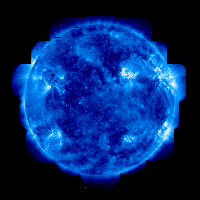

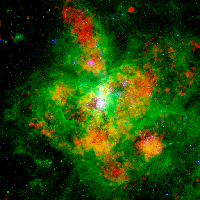
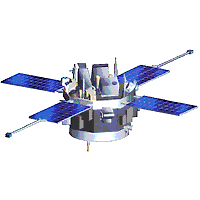
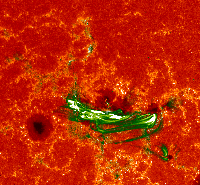
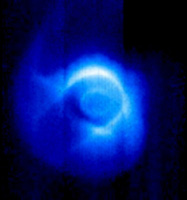
Questions and comments to: cosmicopia@cosmicra.gsfc.nasa.gov
Curator: Dr Eric R. Christian, NASA
Responsible NASA Official: Dr Eric R. Christian
Privacy Policy and Important Notices

HOME
In the News
History
Ask Us
Great Links
Glossary
Site Map
Search NASA